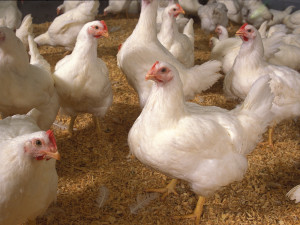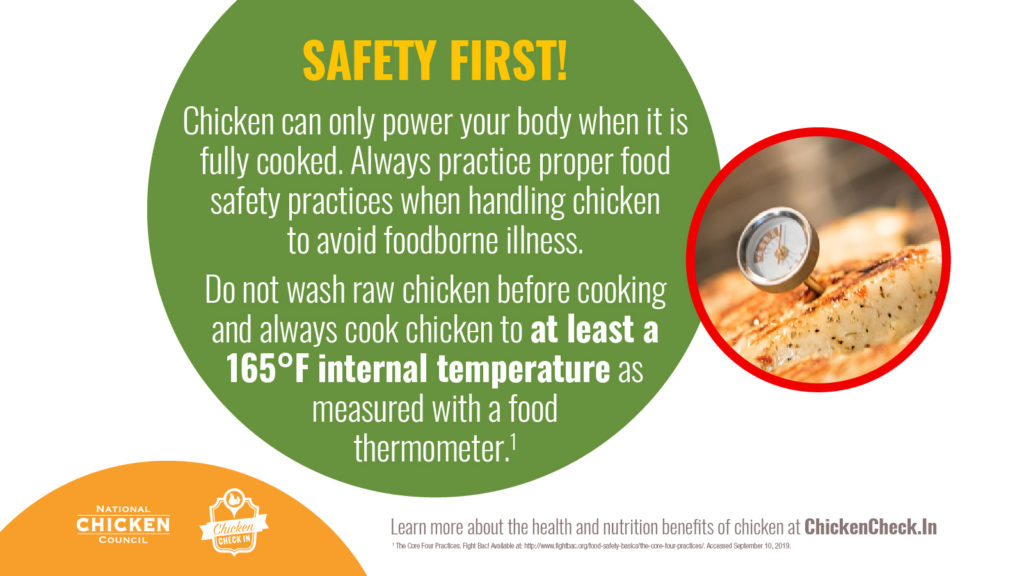Campylobacter: What causes Campylobacter in chicken? How is the chicken industry and public health agencies preventing and controlling Campylobacter?
Thanks to decades of safety and consumer education campaigns, a significant percentage of Americans are now familiar with Salmonella and the infection humans get from ingesting it. Less well-known—yet actually more common—is Campylobacter, which according to the Centers for Disease Control and Prevention (CDC), affects around 1.5 million Americans every year.
Let’s take a closer look at this bacteria, the illness that it causes, and the prevention steps you can take in the grocery store and at home.
What is Campylobacter infection?

Campylobacteriosis is the illness resulting from ingesting Campylobacter. It can be caused by eating raw or undercooked poultry, or eating something that touched it. Campylobacter is also transmitted by foods like seafood and produce; by contact with animals; and by drinking untreated water.
While Salmonella and Campylobacter are both bacterial pathogens, the poultry industry has adopted different control measures in response to each one, both in live production and at the processing plant. This is because the two forms of bacteria are very different and need to be managed in unique ways.
How does food and water become contaminated with Campylobacter?
Campylobacter can be carried in the intestines, liver and other organs of animals. For example, milk may contain Campylobacter if a cow has a Campylobacter infection in her udder or if milk is contaminated with manure. However, the pasteurization process eliminates the threat of ingesting Campylobacter from milk.
Soil and water—as well as the fruits and vegetables that come in contact with soil and water—can be contaminated via feces from cows, birds or other animals.
How is Campylobacter infection diagnosed and treated?
Diarrhea, nausea, fever, vomiting and stomach cramps are common symptoms of Campylobacter. Symptoms usually start 2 to 5 days after infection and last about one week. Though infrequent, some people may experience complications such as irritable bowel syndrome, temporary paralysis, and arthritis. Treatment is not generally required, except electrolyte replacement and rehydration. In rare cases, antimicrobial treatment is recommended.
How are the chicken industry and public health agencies preventing and controlling Campylobacter?
Chicken is safe when properly cooked and handled, and chicken producers and processors are continually working to make it even safer. The below steps are taken to ensure all chicken is as safe as possible before it ends up in your grocery cart or on your plate.
Safety Starts Even Before the Egg:
Breeder hens—who produce the eggs—are attended to carefully and humanely. Healthy breeder hens lead to healthy eggs and eventually, healthy chicks. The chicks inherit the hens’ natural antibodies while preventing the sharing of any diseases or unhealthy antibodies.
The Hatchery:
At the hatchery where the chicks are hatched, strict sanitation measures and appropriate vaccinations ensure the birds are off to a healthy start. At the feed mill, the corn and soybean meal the chickens eat is heat-treated, killing any bacteria that may be present. And on the farm, veterinarians and strict biosecurity measures ensure chickens grow up safe and healthy.
Processing:
At the processing facility, the U.S. Food Safety and Inspection System (FSIS) complements efforts by chicken processors to ensure that every single chicken product is safe, wholesome and correctly labeled and packaged. As required by law, U.S. Department of Agriculture (USDA) inspectors are present in every facility that processes chickens.
These efforts at the processing facility include organic rinses that cleanse the chicken, reducing any potential foodborne pathogens or bacteria; keeping the meat at the proper cool temperature; and using metal detectors to make sure no foreign object makes its way into a product or package. Microbiological tests are then conducted on the products by both the companies and federal laboratories, including testing samples for bacteria such as Campylobacter and Salmonella. This helps ensure that food safety systems are working properly and that each and every final product meets USDA standards for wholesomeness.
These efforts are netting tangible results.
According to FSIS, the prevalence of Campylobacter on chicken parts has decreased 43% from 2018 to 2022.
According to FSIS, the prevalence of Campylobacter on whole chicken carcasses has decreased 37% from 2018 to 2022.
How can consumers take additional steps to prevent Campylobacter?
Follow these 4 simple steps—separate, chill, clean and cook—to help prevent the risk of foodborne illnesses from chicken, including Campylobacter:
1. Separate
Avoid cross-contaminating other foods. Separate raw chicken from other foods in your grocery shopping cart, grocery bags, your kitchen and in your refrigerator. Use one cutting board for fresh produce and a separate one for raw meat, poultry and seafood.
Do not rinse raw poultry in your sink; it will not remove bacteria, and in fact it can spread raw juices around your sink, onto your countertops or onto ready-to-eat foods. Bacteria in raw meat and poultry can only be killed when cooked to a safe internal temperature of 165.
2. Chill
Make raw chicken or meat products the last items you select at the store. Once home, the products must be refrigerated or frozen promptly. Freeze raw chicken if it is not to be used within 2 days. If properly packaged, chicken can remain frozen for up to one year. After cooking, refrigerate any uneaten chicken within 2 hours. Leftovers will remain safe to eat for 2-3 days.
Refrigerators should be set to maintain a temperature of 40°F or below. Thaw frozen chicken in the refrigerator (not on the countertop) or in cold water. To speed up the process, chicken can be thawed in the microwave. Timing will vary. When marinating, make a separate batch of marinade to serve with the cooked chicken and discard anything that was used on the raw chicken.
When barbecuing chicken outdoors, keep refrigerated until ready to cook. Do not place cooked chicken on the same plate used to transport raw chicken to the grill.
3. Clean
Wash hands with warm water and soap for at least 20 seconds before and after handling raw chicken and after using the bathroom, changing diapers and handling pets. Wash cutting boards, dishes, utensils and countertops with hot soapy water after preparing each food item and before you go on to the next food.
4. Cook
Cook chicken thoroughly. All poultry products, including ground poultry, should always be cooked to 165°F internal temperature as measured with a food thermometer; leftovers should be refrigerated no more than two hours after cooking. Be aware the color of cooked poultry is not a sure sign of its safety. Only by using a food thermometer is it possible to accurately determine that poultry has reached a safe minimum internal temperature of 165°F throughout the product. Be particularly careful with foods prepared for infants, older adults and persons with compromised immune systems. When reheating leftovers, cover to retain moisture and ensure chicken is heated all the way through. Bring gravies to a rolling boil before serving.

While chicken is safe when properly cooked and handled, the U.S. chicken industry is committed to continuously improving and investing in food safety practices, from before the egg hatches all the way to your kitchen table.
